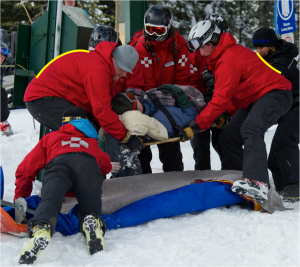 Get a handle on the Load: Manual Lifting Safety
Get a handle on the Load: Manual Lifting Safety
Lifting, pushing, pulling and reaching with load are part of many jobs working at a ski resort. Whether a shovel full of snow, or a guest who needs assistance, it’s likely that everything about the lifting task will be ergonomically unfavorable – and more times than not, so are many of the conditions like…
-
- slippery and sloping surfaces,
- poor surfaces to grasp,
- awkward and unstable postures,
- harsh environmental temperatures and
- time pressures, will also be factors.
CWSAA and go2HR have developed a Safety Talk: Safely Lifting and Carrying Objects or Assisting a Fallen Guest, to help bring awareness to risks and tips related to lifting in a ski resort environments.
Despite the unfavorable factors faced in snowy worksites, there are a few basic strategies that you can use to help reduce your risk, and increase your ability to deal with what risk is inevitable:
- The first strategy for lifting is to stop and assess the situation. This may or may not be an option for you, depending on the immediacy of the situation. If you have to move a large adult guest out of the way of an impending collision with a chairlift – or an out of control guest careening down the hill, there isn’t much time to think. You’ll have to rely on techniques that you’ve practiced to kick in. Which leads us to strategy number two…
- Practice. Learning to look at a situation, recognize the hazards and have a number of potential solutions ready to go for different scenarios is a matter of experience and practice. The more you do it, the faster you’ll be at assessing a situation and making a decision about how to safely act. Put in the time and run drills where appropriate as part of your regular skill development training.
 A Fit for Snow resort in New Mexico runs drills with their snow sport instructors where experienced instructors lay out the safest locations for regroups, as well as practice sessions for getting fallen guests back on their feet on different slope angles and snow surfaces.
A Fit for Snow resort in New Mexico runs drills with their snow sport instructors where experienced instructors lay out the safest locations for regroups, as well as practice sessions for getting fallen guests back on their feet on different slope angles and snow surfaces. - Is there anything you can do to address external factors? Make sure your environment is as clear from hazard as is possible, under the specific circumstances. If possible move out of the flow of traffic, or mark the hazard to reduce collisions. When shoveling snow – shovel out a stable platform, then move the bulk of snow. In the case of a fallen guest at the lift ramp – Stop the chairlift, remove the guest’s gear and get them positioned so their feet are pointing downhill and body braced across the fall line.
- Get a handle on the load – literally – the more difficult it is to hold on to the object being lifted, the more stress there will be on your muscles and tendons. Heavy winter clothing can get in the way – or it can provide a way to grip. Consider using a lifting strap, gloves with grippy palms or other tools to help you get a better grip on the load to be moved.
- Body position. Body position is most often something you have full control of. By beginning in a balanced stance (one leg in front of the other), weight evenly distributed between your feet, object to be lifted close to your body and near waist height (bend your knees and squat down), you position yourself to best accommodate the load as it is lifted. Likewise, beginning in a neutral posture with your joints aligned and your core activated will best protect your musculoskeletal system from strains.
 Case Study: Consider the two patrollers in the photo on the right. The injured guest was located in the loading box for the chairlift, making access awkward. Because of space constraints only two patrollers are supporting the backboard at the time the photo was taken, and the direction of movement was such that the load was shifting further away from the patrollers bodies’ – especially for the smaller individual on the right hand side of the photo, who was even further destabilized by standing on one leg during the weight transfer. And yet, it’s pretty clear whose back was well positioned to transfer the load through the lower body without putting stress on the spine.
Case Study: Consider the two patrollers in the photo on the right. The injured guest was located in the loading box for the chairlift, making access awkward. Because of space constraints only two patrollers are supporting the backboard at the time the photo was taken, and the direction of movement was such that the load was shifting further away from the patrollers bodies’ – especially for the smaller individual on the right hand side of the photo, who was even further destabilized by standing on one leg during the weight transfer. And yet, it’s pretty clear whose back was well positioned to transfer the load through the lower body without putting stress on the spine.
When faced with the need to move we don’t have time to think about whether our spine and pelvis are in neutral and which muscles to engage. But this powerful (or not) ready position is set by reflex, the way we practice standing becomes the place that we go to under duress. Consider establishing a warm up sequence that begins with postural alignment and core activation, and ask employees to use the sequence prior to beginning a shoveling or lifting assignment. It only takes seconds and yet has large performance and injury prevention benefits.
– Article written for CWSAA by Delia Roberts, Fit for Snow
More resources related to Lifting:

